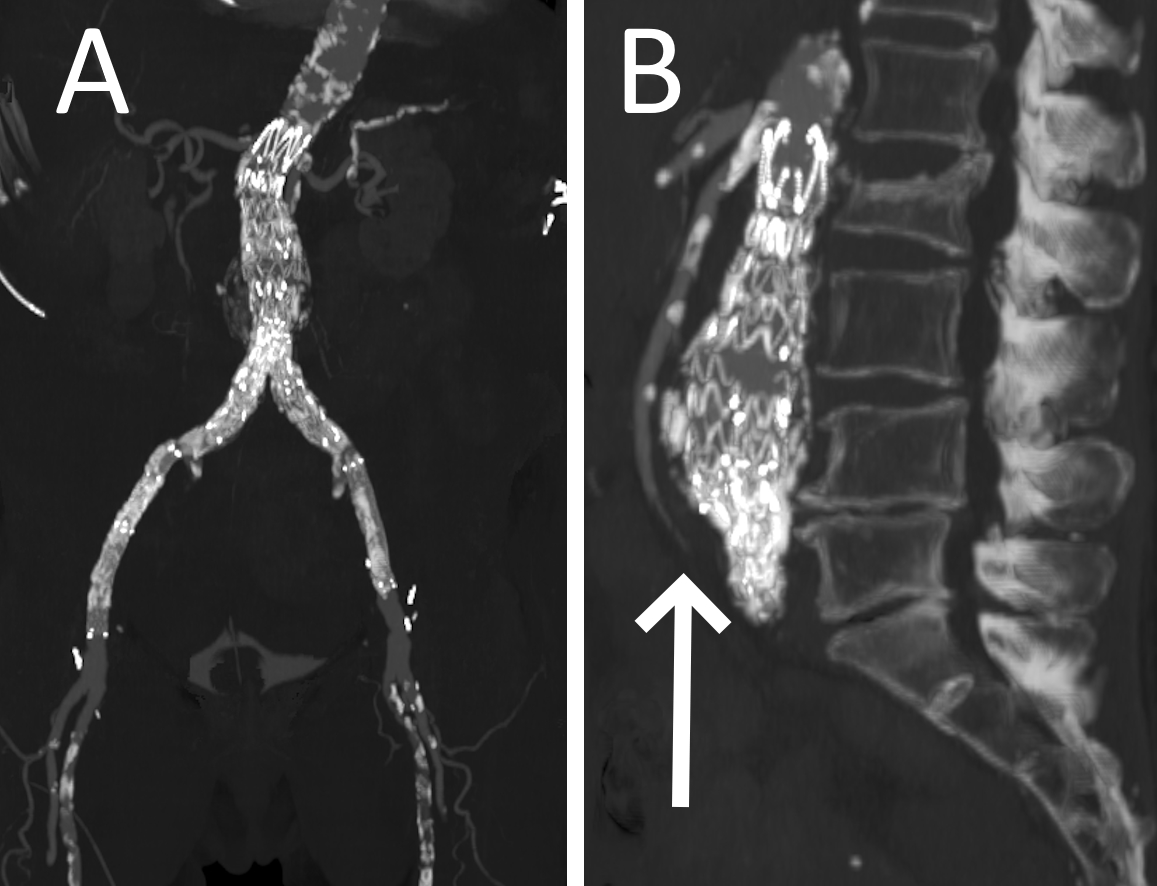The Silent Danger: A Rare Case of Asymptomatic Aortocaval Fistula Discovered During Routine Imaging
DOI:
https://doi.org/10.59667/sjoranm.v15i1.14Keywords:
EVAR, asymptomatic, AAA, aortocaval fistula, complicationAbstract
Background:
Aortocaval fistulas resulting from abdominal aortic aneurysms are rare, representing 3–6% of ruptured cases. These fistulas are often asymptomatic or present with non-specific symptoms related to venous hypertension or high-output cardiac failure. Fortuitous diagnoses in asymptomatic patients are exceedingly uncommon.
Case Presentation:
An 86-year-old woman underwent CT angiography to evaluate left leg circulatory issues. Imaging revealed an aortic aneurysm with a fistula into the inferior vena cava, an enlarged right atrium, and pelvic vein varices. The asymptomatic fistula was treated with endovascular aneurysm repair (EVAR). Postoperatively, the patient developed superior mesenteric artery occlusion and intestinal ischemia, leading to palliative care and death.
Discussion:
Aortocaval fistulas can result from a variety of causes including infection and trauma. Diagnosis is typically achieved through CT angiography. While open surgical repair remains the standard treatment, EVAR is a viable alternative in selected cases. However, the prognosis remains guarded, even with appropriate treatment.
Conclusion:
Aortocaval fistulas are rare and life-threatening conditions that require prompt diagnosis and management, though outcomes are often poor.
References
1. Psathas ED, Lioudaki S, Doulaptsis M, Charalampoudis P, Klonaris C, Verikokos C. Clinical Mani-festations of Aortocaval Fistulas in Ruptured Abdominal Aortic Aneurysm: Report of Two Cases. Case Rep Surg. Hindawi Limited; 2012;2012:1–4. doi: https://doi.org/10.1155/2012/123081.
2. Gulati A, Kapoor H, Donuru A, Gala K, Parekh M. Aortic fistulas: Pathophysiologic features, imaging findings, and diagnostic pitfalls. Radiogra-phics. Radiological Society of North America Inc.; 2021;41(5):1335–1351. doi: https://doi.org/10.1148/rg.2021210004.
3. Accarino G, Benenati A, Accarino G, et al. Endovascular treatment of an aortocaval fistula caused by a late type II endoleak. Journal of Vascular Surgery Cases, Innovations and Techniques. Society for Vascular Surgery; 2024;10(2). doi: https://doi.org/10.1016/j.jvscit.2024.101436.
4. Sohail AH, Cohen K, Ho K, Cimaroli S, Brathwaite CEM, Shin P. Incidental aortocaval fistula in the setting of an unruptured abdominal aortic aneurysm. J Surg Case Rep. Oxford University Press; 2023;2023(7). doi: https://doi.org/10.1093/jscr/rjad384.
5. Greenfield S, Martin G, Malina M, Theivacumar NS. Aortocaval fistula, a potentially favourable complication of abdominal aortic aneurysm rupture in endovascular repair. Ann R Coll Surg Engl. Royal College of Surgeons of England; 2020;102(8):E180–E182. doi: https://doi.org/10.1308/RCSANN.2020.0090.

Downloads
Published
Issue
Section
License
Copyright (c) 2025 Thomas Saliba, David Rotzinger

This work is licensed under a Creative Commons Attribution 4.0 International License.
This license requires that reusers give credit to the creator. It allows reusers to distribute, remix, adapt, and build upon the material in any medium or format, even for commercial purposes.








